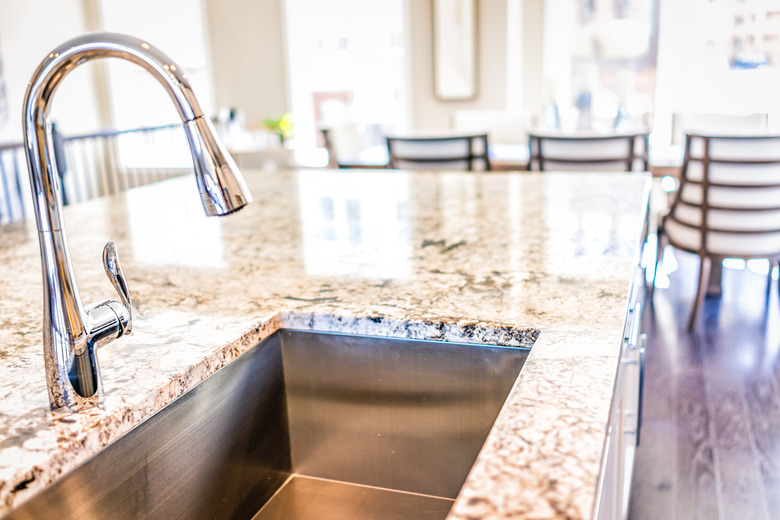How To Fix A Waterlogged Well Water Pressure Tank
We may receive a commission on purchases made from links.
To work properly, your well water pressure tank requires air space. Some tanks achieve this through an air bladder or diaphragm. Others count on the fact that air is lighter than water to keep a natural air cushion on top of the water in the tank.
Whichever type of pressure tank you have, it will stop working if the air in the tank dissipates, and the entire tank fills with water. Sometimes, you can fix this problem, but sometimes, you can't and will need to replace the entire water pressure tank.
Signs of a Waterlogged Tank
Signs of a Waterlogged Tank
There's nothing subtle about a waterlogged tank, and you're likely to notice several symptoms if you have a problem. One is the constant ticking of your water pump turning on and off repeatedly, which is a problem called short cycling. You'll also likely notice that the water coming out of your tap or showerhead pulsates rather than flowing continuously.
If you notice these issues, take a look at your well water pressure tank and give it a tap. It will sound hollow where there isn't any water. If no part of the tank sounds hollow, it's likely full of water. You can also open a tap and watch the pressure gauge. The pressure gauge should glide smoothly between 60 and 40 psi as you open and close taps. If the gauge jumps around, it's time to service your tank.
How to Fix a Bladder Tank
How to Fix a Bladder Tank
Although there are exceptions to every rule, most well water pressure tanks with bladders and diaphragms can't be fixed and need to be replaced. Some tanks allow you access to these parts so you can change them, but most do not. Trying to fix your tank is still worth a try, however, and it may work if your bladder is stuck in an odd position rather than damaged or failing.
- Turn off the electricity to your well pump so it doesn't come on while you're working.
- Bypass your water filtration system if applicable. Draining the tank can bring up some sludge that will clog your filter system.
- Open the drain on the pressure tank and drain the water completely.
- Use a tire gauge to check the pressure valve on top of the tank. Now that the tank is empty, it should read about 28 or 30 psi. If it doesn't, release air from the valve or add air with an air compressor as needed to reach the desired pressure.
- Turn your well pump back on and run water through your system until it runs clear. When it does, you can turn your filtration system back on.
- Replace the well pressure tank if you're still having problems.
How to Fix an Air Over Water Tank
How to Fix an Air Over Water Tank
You may have better luck when it comes to fixing an air over water tank. There are no moving parts here, so there is less that can break. Because the air and water in these tanks aren't separated, the air sometimes dissolves into the water. Adding more air is sometimes all it takes to get you up and running again.
- Turn off the power to your well pump and bypass any water filtering equipment you may have.
- Open a faucet and let it run until the pressure drops to zero and the water stops.
- Leave the tap open and add air to the water pressure tank. Keep adding air until the pressure in the tank is as close to completely empty as you can get it.
- Turn off your main plumbing valve and then go back to adding air to the tank. Stop when the air pressure in the tank reaches around 25 psi.
- Restore the power to your well pump and turn your main plumbing valve back on.
- Run water through your tap until it runs clear. Turn your water filters back on.
- Purchase and install a replacement well water pressure tank if you're still having trouble.
